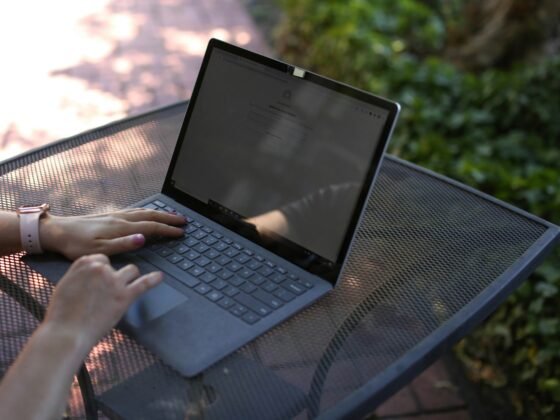Being in ‘Airplane Mode’ for a long time, people usually connect to the public Wi-Fi network at airports to quickly check their emails, social media, and inform family members that they’ve landed. Similarly, people regularly use public Wi-Fi freely available at restaurants, pubs, cafes, and hotels.
What if I told you though that connection to such networks is incredibly dangerous? You see, public Wi-Fi networks are a breeding ground for cybercriminals. They intercept, track, and modify the internet traffic and steal passwords or download viruses on the victims’ devices.
However, the good news is that you can protect your privacy on public networks by taking some security measures or finding a free but reliable privacy-tool like a VPN from VPNRanks.
How Do Cyber Criminals Hack Public Wi-Fi
Public Wi-Fi networks are potentially insecure and are often vulnerable to attacks from hackers. They make their way into public networks through the following methods.
- Hacking a Public Wi-Fi Hotspot. Some routers are not properly secured, which leads to cybercriminals finding loopholes in security and access the router firmware console.
- Creating a Fake Wi-Fi Hotspot. Hackers trick people in public places by giving a deceiving name to the Wi-Fi hotspot created from their device, like ‘McDonald’s Wi-Fi.’
If a public Wi-Fi is secured with a password, a hacker can easily get the password from its owner like you. According to a study, almost every 2 out of 5 Wi-Fi hotspots in the United States are insecure. So, you cannot trust any network except the one you set up.
Public Wi-Fi Attacks
Following are some known malicious and spying activities that a cyber-criminal attempts after successfully hijacking a public network.
1. Eavesdropping Attacks
Eavesdropping is an act of secretly or stealthy spying on sensitive information. The hackers use a network sniffing tool that filters and combats through any unsecure data passing through the web and redirects it to their device.
In this way, they can spy on your online activity, access your mailbox, read your private messages, see your web page requests, and more.
2. Man in the Middle (MITM) Attacks
In this trick, a hacker acts as a middleman, accessing and modifying the data sent back and forth on the network. These MITM attacks are hazardous, and the attackers might use them to steal your private data, force you to watch more ads, and download viruses or malware on your device.
3. Domain Name System Spoofing
Domain Name System or DNS spoofing is a cyber-attack. A hacker replaces a DNS name server’s resolver cache and redirects the traffic on a network to an unintended destination. Hence the victims are diverted to fake websites which they otherwise didn’t intend to visit.
These websites look similar to official and legitimate to the victims’ banking or company websites and the hacker can easily steal their passwords.
How to Protect Yourself from Cyber Attacks
Does it mean to stay at home and don’t visit places? You can now travel around the world without being exposed to security threats by following these simple tricks. If you get a reliable VPN for traveling, you don’t have to care for other things mentioned below.
1. Always Check for HTTPS
While visiting websites, make sure to check whether these websites are protected with a security certificate or not. A secure website must contain “https://” at the URL’s start, often accompanied by a green or greyish-black padlock.
These security certificates use encryption to secure the data sent back and forth between a browser and the intended website on the network. This SSL encryption scrambles your data before sending it to the website, making it difficult for the hacker to spy on your data.
Note that these HTTPS certificates encrypt the data to protect it from being spied on, the website address you visit is still vulnerable, and a hacker can easily see which websites you’re visiting.
2. Use a Virtual Private Network
A Virtual Private Network or VPN encrypts all data leaving your device and reroutes it through secret tunnels to its owned server and then accesses the desired website from its server-generated IP address.
In this way, your web surfing is entirely safe as hackers won’t be able to tell what data you’re sending and to which websites you’re visiting.
A VPN is the most reliable and trusted method used by many small and big firms to protect their privacy from malicious cyber-attacks. A VPN comes in many shapes and sizes. Most reputable and paid VPNs have apps available for all the devices you usually use.
A VPN can cost as low as $2.21/month, and most VPNs come with a free trial. There are also free VPNs available in the market, and you can use them at your own risk.
3. Use Mobile Data & Mobile Hotspot
Using mobile data usually is more secure than connecting your device to a highly compromised public Wi-Fi. If you want to use another device like a laptop, you can turn on your mobile’s Wi-Fi hotspot and connect your computer with it. Make sure to protect it with a strong password.
4. Make a Backup of All Sensitive Data
While traveling, leave all the devices with sensitive data at home. If it is essential to keep your laptop with you on a trip, make sure that you have a backup on an external hardrive or the cloud. In this way, if you become a victim of a cyber-attack, you will have a backup at home.
5. Don’t Visit Banking or Company Sites
If you’re using public Wi-Fi in a place crowded with people, don’t visit banking or company sites unless there is a real need for that. Hackers in such areas sometimes look for any chance to get your passwords or steal your sensitive data.
6. Get a Portable Hotspot
With a portable hotspot like Roaming Man or Skyroam, you can get a secured personal Wi-Fi connection around the world and stay away from international data and public Wi-Fi. They give you 4G internet access in about 120 countries around the globe.
Wrapping Up
People often travel for various reasons, and they may sometimes come across using public Wi-Fi without knowing the threat these Wi-Fi impose on their privacy.
Hackers often use these unprotected networks to steal sensitive and private information from the people connected to the same network.
But there are some ways to stay completely anonymous and secure from phishing attempts while traveling places. You can take various safety measures, but they can’t let you fully secure yourself.
A VPN is so far the best-known way to remain protected from cyber-attacks. They do have some setbacks but are still the most reliable method trusted by many people around the world.












